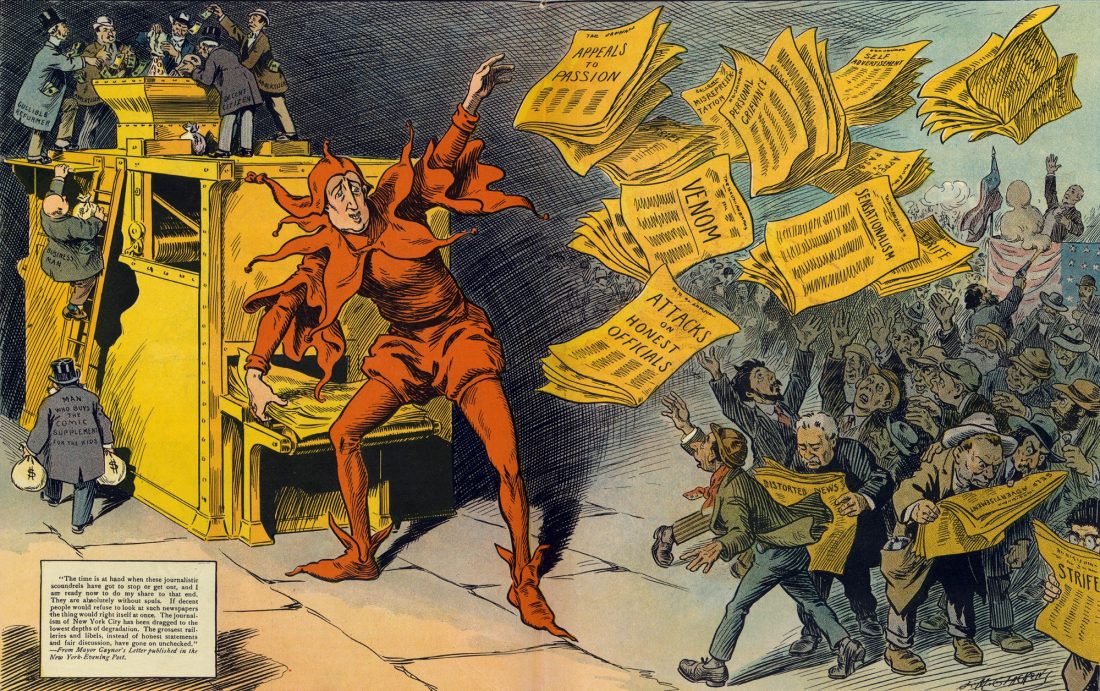By Gaia Santoro Lecchini
In 1980, the acclaimed Washington Post published an article titled “Jimmy’s World,” by Janet Cooke. It spread like wildfire. The story described a third-generation, young, heroin addict. His aspirations were to sell drugs on the District’s “meanest streets.” There was instant outrage among those who wanted to help this boy –– yet they couldn’t because the Post protected its source.
But there was no source to protect.
Cooke had created Jimmy and his world. She stated in a letter of resignation from the Post that her story was “in essence a fabrication.” Once the deception became clear, an onslaught of criticism and hostility from both the public and other newspapers came down on the Post. People were horrified that such a significant falsehood could get past a team of well-known editors at the Post. Times columnist William Safire wrote an essay called “Bradlee’s World.” He blamed the hoax on Ben Bradlee, a respected executive editor at The Washington Post who stuck by Cooke when she was pressured for a source. The scandal went beyond the Post, however, moving into the very credibility of journalism as a profession.
There was once a time where fakery and unchecked journalism was standard. In the nineteenth century, the term “faking” came to be. To withstand the critiques of “Faking,” journalists argued that the actual stories were not fake, but that the “unimportant details” were made to be more picturesque and therefore interesting. Journalists were not much more than storytellers at the time, their credentials far from anything one might see today. Newspapers paid more for longer stories, leading them to embellish and extend their accounts. Increasing customers’ interest seemed essential not only for the livelihood of the journalists, but the circulation of the newspapers.
“Yellow Journalism” followed the age of “faking.” This era came to be characterized by the sensationalism and exaggeration that grew in newspapers. Headlines got bigger, scandals replaced hard news, and gossip seemed just as good as new research. Newspapers aimed to catch the eyes of readers, and more importantly, customers.
Yet when the Post published “Jimmy’s World” the media was in what some called the “Golden Age” of journalism, when only politicians seemed to lie –– before being caught by journalists. Yellow journalism and faking seemed to be gone. The public held the media to high standards and generally trusted it as a “watchdog” of politics. In well-respected newspapers like The Washington Post, the idea of a journalist faking or committing yellow journalism was, as one writer noted, “akin to sinning in church.”
That is why the reaction to Cooke’s hoax was so intense. Critics questioned journalism’s ability to relay objective and unfiltered information. The doubt was further exacerbated by the trust the Post had garnered from readers over the years, especially its role in the exposure of the Watergate scandal. The public began to criticize the role of anonymous sources in news. Some called for tighter regulation on the way reporters wrote their stories was called for.
The idea that there was ever a shared consensus or a Golden Age that represented the American people and their truth, is false. Media coverage represented the worries of the white population, specifically middle-aged, white men. It was the era of Walter Cronkite –– an anchorman for CBS whom surveys named as “the most trusted man in America.” Cronkite was seen as the face of America yet only looked like a small part of it.
Despite Cooke being welcomed into the Post with enthusiasm due to her impressive credentials, which she misrepresented as well, she was placed into a “second-tier” of reporting –– the Weekly –– and was determined to move up. Courtland Milloy, a columnist that worked with Cooke, said: “For all the glamour and prestige that Janet supposedly brought in with her to the Post […], with all her credentials, Janet still went straight to the Weekly.” In a world of Cronkites, Cooke struggled for a platform as an African American woman. The lack of diversity and the limitations of media’s “consensus” likely contributed to her thirst for recognition.
Cooke and her “Jimmy’s World” deeply challenged the trust between the public and media. Yet it is worth asking if there was truly ever any trust in the media. If so, from whom? If Americans had indeed trusted the media, marginalized groups were not necessarily included in the trust.
The homogenous, white consensus tended to negatively distort the truth of non-white communities. The control white elites had over the representation of marginalized communities in the media vastly impacted the public’s view of those groups. This ranged from coverage consisting heavily of African and Latin Americans in crime news, the misconception of social welfare programs used primarily by people of color, and the use of drugs by these communities. It was natural that marginalized groups would distrust the media.
Overall distrust in media has steadily risen since the middle of the twentieth century. The information culture of the twenty-first century echoes the days after Cooke’s story was found to be fake. Yet the difference about this growth in distrust is its foundation in a primarily white and conservative wing of politics. A recent Gallup poll shows trust in media to be at an “all-time low,” with Republicans polling the lowest. There is a fear on all sides, however, that Americans are living in a world of Janet Cooke’s and “Jimmy’s Worlds.”
